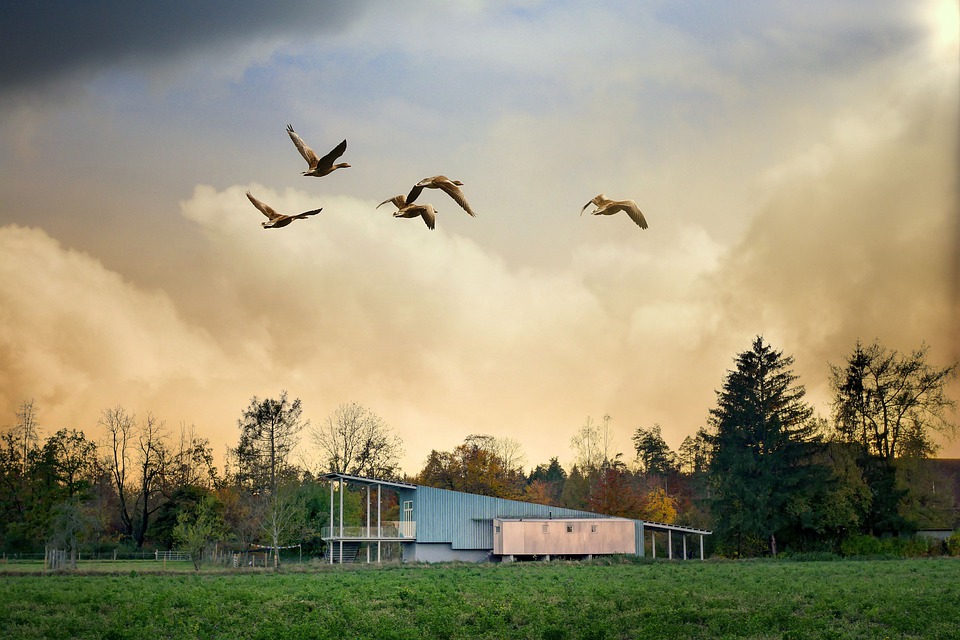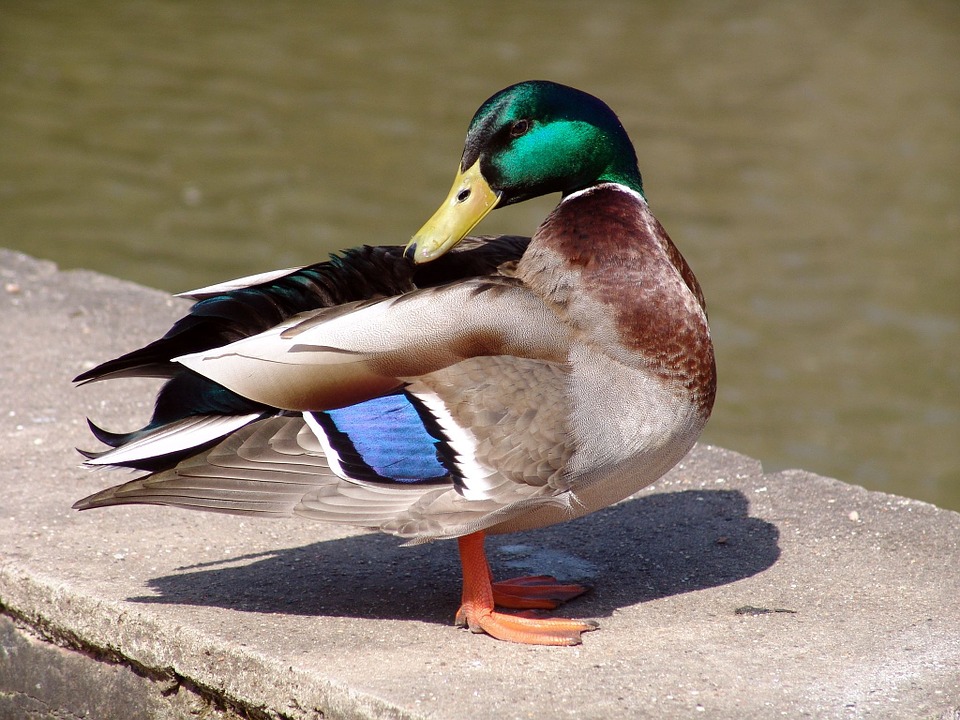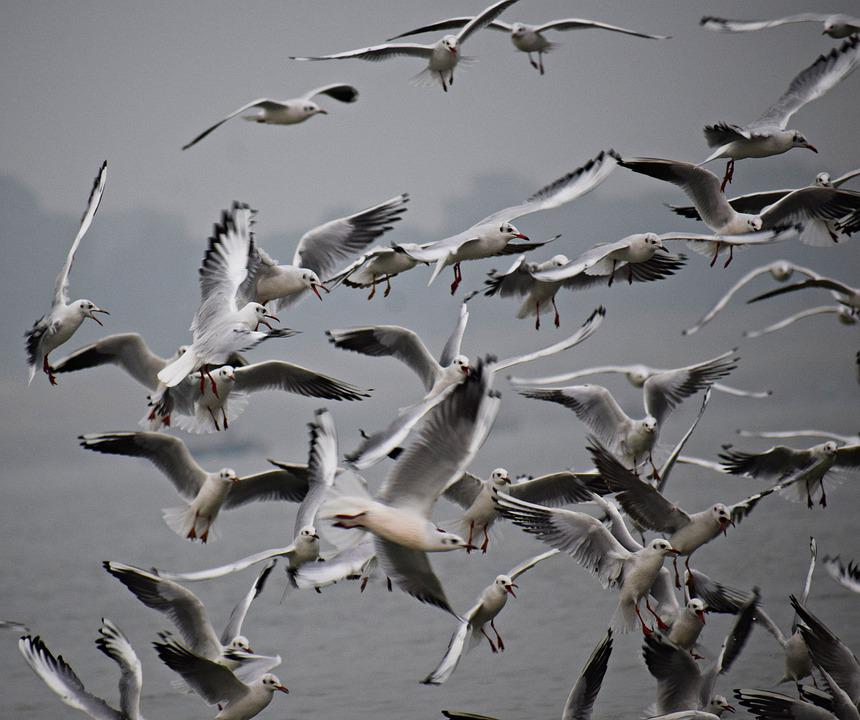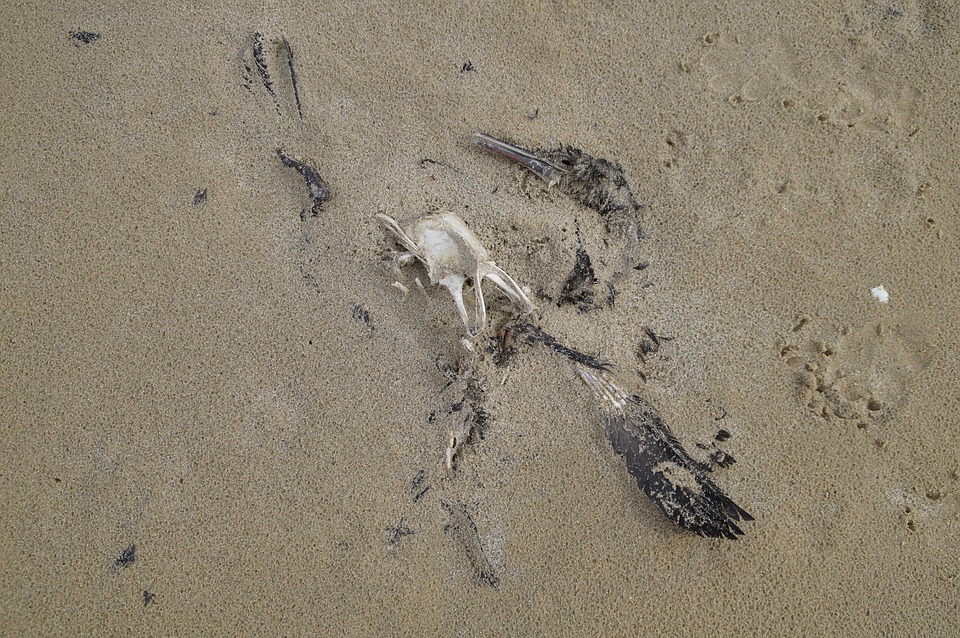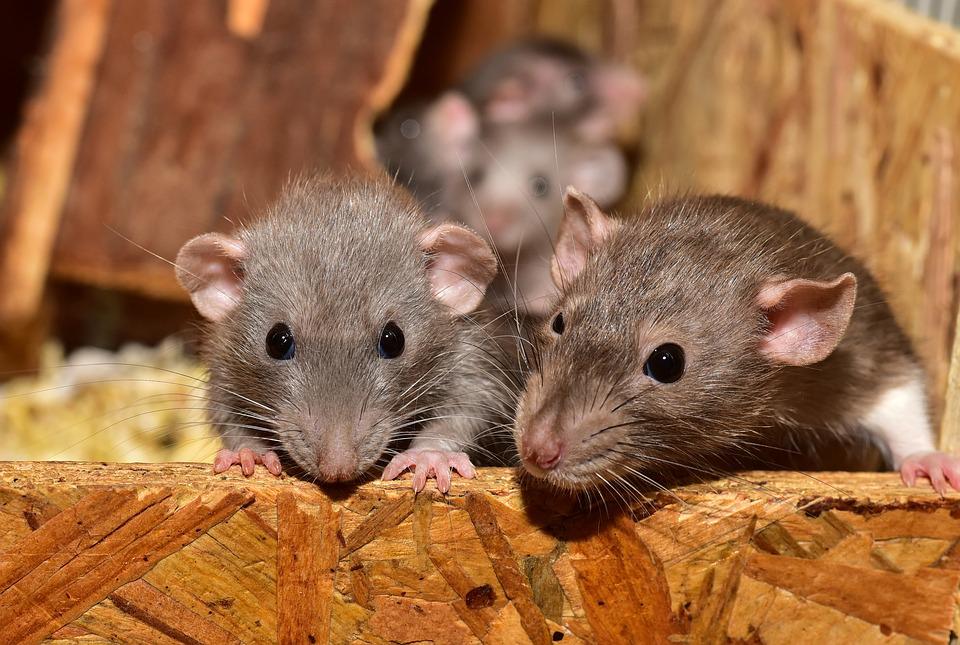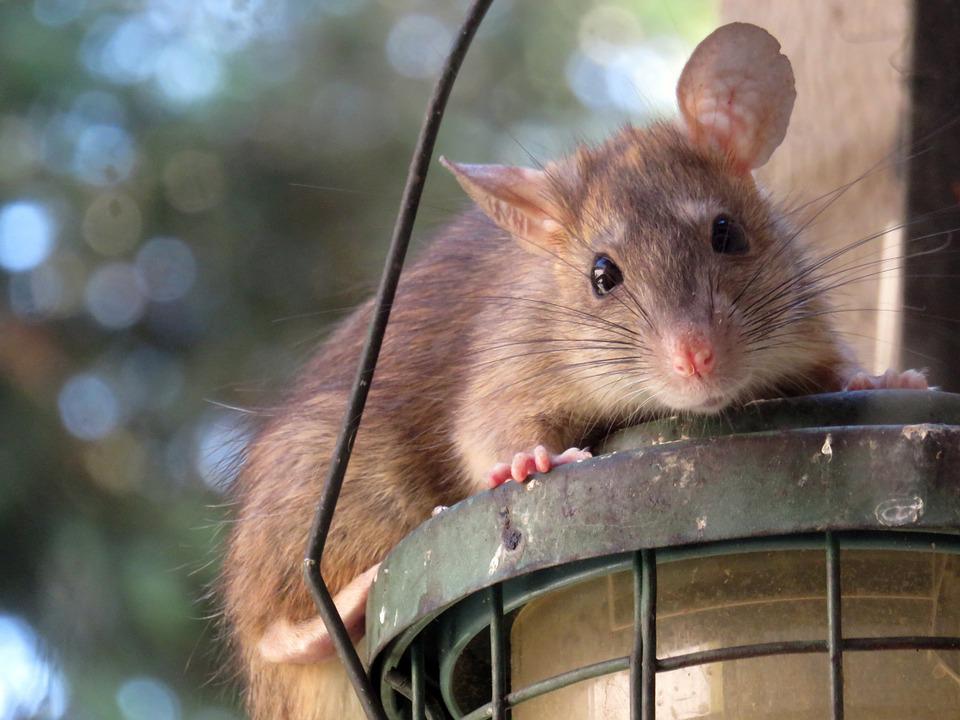Highly pathogenic avian influenza (HPAI) is one of the deadliest diseases for poultry throughout the world, and some strains may affect humans, who might die from it.
AI, or bird flu, has resulted in the death and mass slaughter of more than 246 million birds worldwide between 2005 and 2020, with peaks in 2006 and 2016. During these two years, about a quarter of the world’s countries were affected.
Up to now, several humans have been infected with subtypes of H5N1 and other subtypes, about half of which have succumbed to the disease. There are no specific vaccines for preventing Influenza A (H5N1) in humans. Because the strains evolve, it is of great importance to keep this disease at bay.
- Migratory wild water birds have been proven to spread bird flu. (Source: Pixabay)
- The droppings of wild waterbirds can contaminate drinking water in ponds and cause disease. (Source: Pixabay)
Biosecurity and vaccination are fundamental to successful health management of poultry. Vaccination helps prevent endemic diseases that are already there, while biosecurity helps prevent the introduction of disease from elsewhere.
A biosecurity programme must take into consideration three factors, namely location, farm design and operational procedures, which are all designed to keep pathogens or disease-causing organisms away from the flock.
Location
Isolate farms from other poultry, livestock, and other animals and birds, and keep poultry of the same age and from the same supplier in a poultry house to prevent cross-contamination.

Whole flocks of ostriches had to be culled because they were suspected of being infected with avian influenza, and farms had to be quarantined. (Source: Pixabay)
Farm design
Create a barrier by erecting a fence to prevent any unauthorised person or animal to have access to your poultry house. Design the farm to have a single entrance/exit that can be controlled to keep out humans and animals alike.
Poultry houses must be designed to facilitate proper cleaning daily and disinfecting between flocks. The poultry house must be proof against insects, rodents and wild birds to prevent these unwanted critters carrying disease from sneaking in.
Operational procedures
Prevent the introduction and spread of disease with procedures that control the movement of people, feed, equipment and animals on the farm. Enforce strict rules to ensure that contamination is prevented.
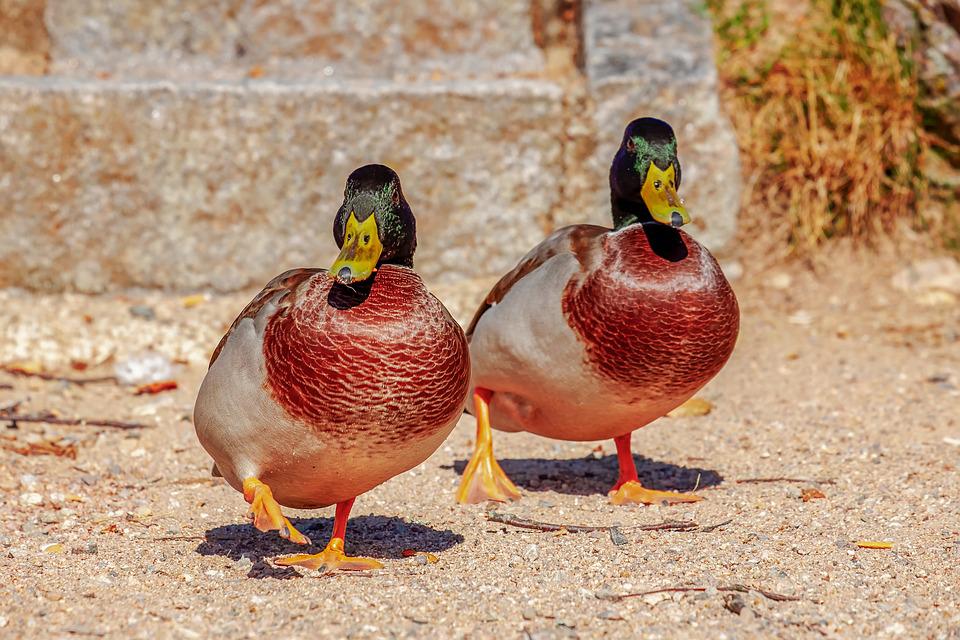
In some areas where ostriches are farmed, no poultry species, including chickens, ducks and geese, were allowed in case they spread AI to the ostriches. (Source: Pixabay)
The following procedures must be followed:
Humans
Commercial poultry farmers reduce the risk of humans bringing diseases into their production systems by fencing in their poultry houses. You must enter through a reception area where you sign in, so that, in case of an infection, it can be traced to the person who entered at a specific time.
In addition, there is often a walk-through shower where everybody – farmers, veterinarians, workers and visitors – must have a shower and put on clean clothes and shoes before they are allowed to enter the premises.
Where people are not required to take a shower every time, there must at least be a footbath with disinfectant that they must step into before entering the production area.
No clothes or shoes that were worn outside the poultry units are allowed inside, because it has been proven that clothes, dirty hands, and even human hairs can carry the disease. Clothing used inside the premises must be washed on the premises to ensure it remains disease-free.
- Wild birds, like seagulls, are susceptible to bird flu. (Source: Pixabay)
- Hundreds of sea birds died as a result of AI during a recent outbreak in the Western Cape. (Source: Pixabay)
It is not always possible to have all these precautions on your small-scale farm, but you can insist on restricted entrance, and make sure that you have special clothes, like overalls and boots that you wear only inside the poultry house. Personal hygiene is also important: wash your hands before and after handling chickens.
Farming equipment, feed and vehicles
All farming equipment, as well as poultry feeding and drinking equipment, should be cleaned on the premises to prevent a build-up of bacteria, and prevent diseases from spreading from one house to the other, or from one bird to another. Any item that is removed from the poultry house must be disinfected before it is returned.
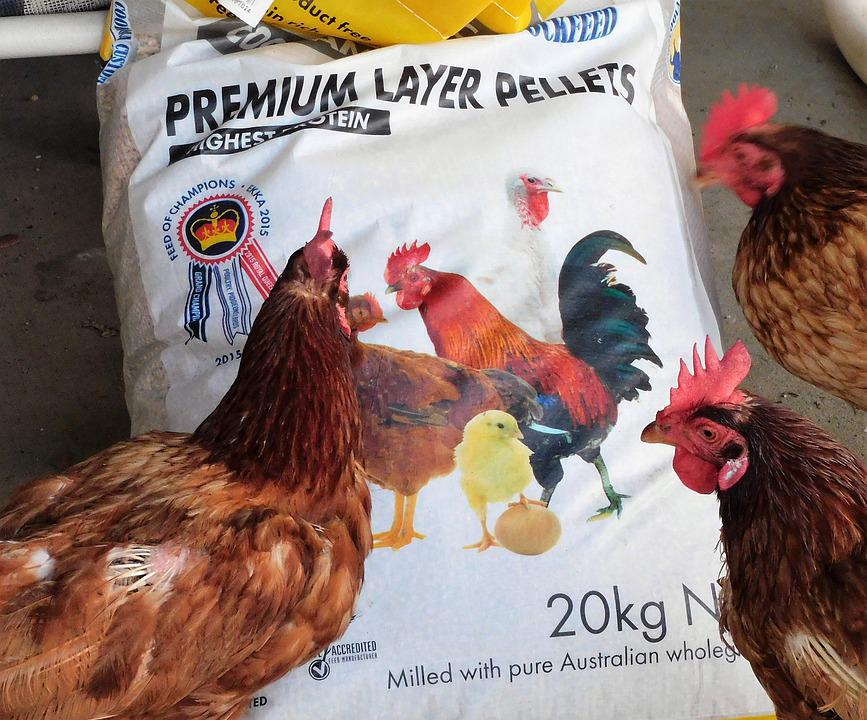
Small-scale farmers should not buy feed in bulk, but only in smaller bags to prevent the food from becoming mouldy and making your chickens sick. (Source: Pixabay)
It is most important to prevent vehicles from bringing disease onto your farm. Vehicles that transport chickens, feed, or new litter to your farm, must be sprayed with disinfectant before being allowed onto your property. Their movement must also be restricted to a specific area.
Feed can also contain contaminants, such as mould, which can produce toxins. To reduce the risk, farmers must buy only the best quality feed from a reputable supplier. For a small poultry farm, it is best to buy feed in small quantities and not in bulk. Feed must be properly stored in a dry, cool place with a lock and where no other people, birds, or rodents can get in. Discard old, mouldy food.
Other birds and animals
The chickens are kept in houses to limit their contact with all other animals, including other chickens.
It is good practice to group your birds in batches according to the time they arrive and their age. In this way one batch from a specific supplier arrives and leaves at the same time, limiting the possibility of contamination from other suppliers’ farms.
It is essential to clean and disinfect poultry houses and the area surrounding them after a batch has left and before a new batch arrives.
Also, any sick or dead birds must be removed immediately and either buried or burned some distance from your farm.
Keep wild birds away from your chickens. Wild birds, especially migrating waterfowl, are known to be carriers of pathogenic avian influenza (HPAI), also known as bird flu, which is highly contagious and deadly. The droppings of wild birds, or dead wild birds, may also pollute drinking water, which may cause disease outbreaks.
- Rodents, like mice and rats, carry lice, mites and flies that can cause disease in poultry. (Source: Pixabay)
- Mice and rats must be kept away from the production area and particularly from water and feed storage bins. (Source: Pixabay)
Rodents, like rats and mice, are a big concern, because not only do they eat the feed, break eggs and kill young chickens, they also carry diseases and parasites like lice, mites and flies. Poultry houses and food storage facilities must be rodent-proof and baiting or trapping programmes must be in place to keep their populations in check.
Pets must also be kept out of the production area.
Communities must work together
A community must work together to promote biosecurity, because no farm can do it on its own. It is practically impossible to contain disease when chickens are allowed to scavenge around the community for food.
Unless a barrier between these freeranging birds and your poultry house can be erected, it is essential that the community work together to remove sick or dead birds from the rest of the flocks.
Every farmer must buy poultry only from a reputable source, and keep new birds separate from existing flocks for a few weeks to ensure the new birds are not a health risk, bringing disease to the community.
It is important to inform authorities of any disease outbreak.
It is also important to keep contact with buyers of chickens to a minimum, especially if they are known to travel from farm to farm to buy birds.
Do not eat sick birds or those that have died because of disease.
Checklist for keeping it clean
- It is most important to keep your poultry farm clean in order to keep it free of disease.
- Place a footbath with disinfectant outside the door and use a special pair of shoes for working inside the poultry house. Wash your clothes and keep your body and especially your hands clean.
- Clean and disinfect the poultry houses between batches of chickens, and leave them empty for at least a week to get rid of diseases that need a host to survive.
- Remove old litter, dirty bags and any rubbish from your poultry houses and yard and dump it far away from your farm, but in such a way that it does not contaminate the environment.
- Discard old, damp feed as it can also make your birds sick.
- Do not overcrowd your poultry houses. Make sure the birds have enough clean water, fresh air and light – preferably sunlight. Damp, dark and mouldy conditions breed disease.
- Wash your hands before and after handling chickens!
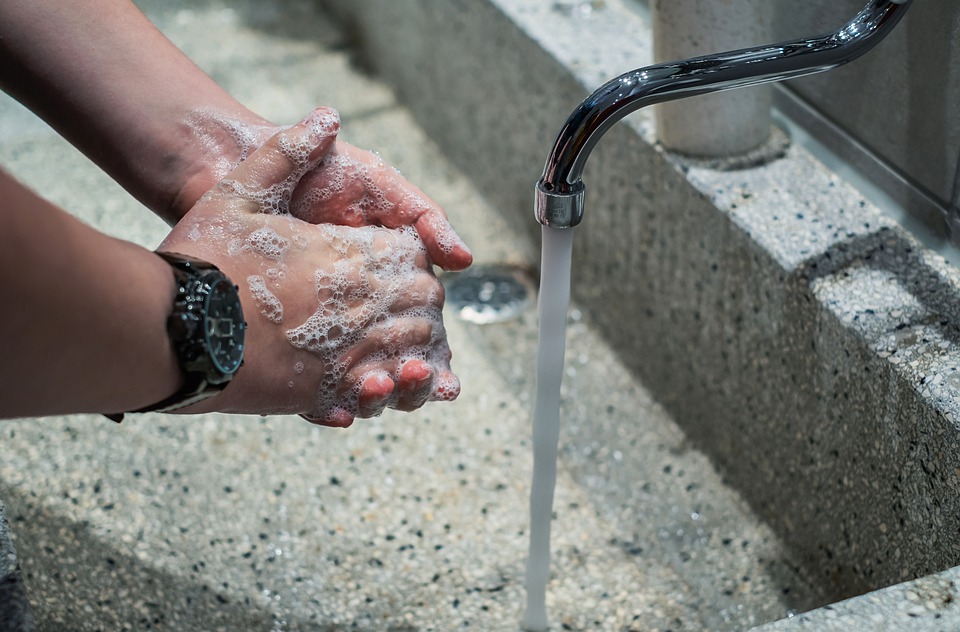
Personal hygiene is of utmost importance, and washing your hands before and after handling chickens is the first step in preventing the spreading of disease. (Source: Pixabay)
Resources
Arbor Acres broiler management guide. (2009) Aviagen
https://eu.aviagen.com/assets/Tech_Center/AA_Broiler/AABroilerHandbook2018-EN.pdf
High pathogenic avian influenza (HPAI) situation report. (2022)
World Animal Health Information System of the World Organisation for Animal Health (OIEWAHIS). https://www.oie.int/app/uploads/2022/03/hpaisituation-report-20220317.pdf
Influenza A (H5) – United Kingdom of Great Britain and Northern Ireland. (2022). World Health Organisation https://www.who.int/emergencies/disease-outbreak-news/item/influenza-a-(h5)—united-kingdom-ofgreat-britain-and-northern-ireland
Kriel, G. (n.d.) Biosecurity in Poultry Production. Poultry Farming in South Africa https://southafrica.co.za/biosecurity-in-poultry-production.html

